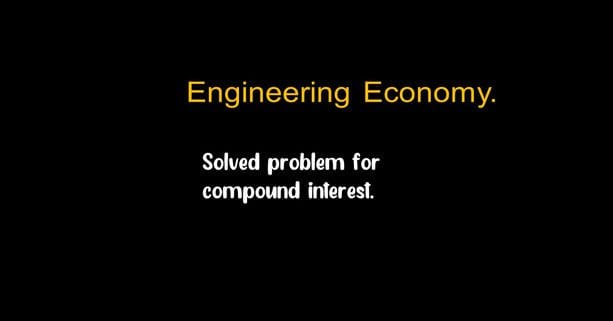Last Updated on September 1, 2024 by Maged kamel
A Solved problem for compound interest.
Detailed expression for compounded continuously.
This is the equation used to estimate the future value of continuously compounded payments, where (e) is Euler’s number. We will need to use the equation for the third option in the next solved problem as we will see later on.

A Solved problem, the reference is the Time value of money part-1.
It is required to select the correct option of the four given options, what is the least present value to be deposited as of today to get $10000 after given years from today, The interest rate options are varying for both the value of interest and the frequency of interest.
Option-1 for the solved problem for compound interest.
This is the first option, how to find the value of the present value P0 to get $10,000 after 4 years, with the interest of 8 % compounded quarterly?
The relation of P0=F*(P/F,i%,n) will be used provided that the new interest rate is adjusted to be (0.08/4). The term (1+i/n)^nt=(1+(0.08/4))^(4*4), since the number of years=4, the present value=F/(1+i/n)^nt=10,000/(1+0.02)^(4*4)=$7284.45.

Option-2 for the solved problem for compound interest.
This is the second option, how to find the value of the present value P0 to get $10,000 after 5 years, with an interest of 7 % compounded yearly?
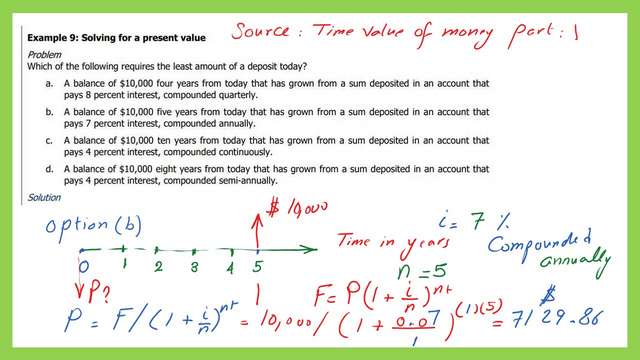
The relation of P0=F*(P/F,i%,n) will be used provided that the new interest rate is, The term (1+i/n)^nt=(1+(0.07/1))^(1*5), since the number of years=5, the present value=F/(1+i/n)^nt=10,000/(1+0.07)^(5)=$7192.86.
Option-3 for the solved problem for compound interest.
This is the third option, how to get the present value P0 to get $10,000 after 10 years, with an interest of 4 % compounded continuously?
The relation of P0=F*(P/F,i%,n) will be used provided that the new interest rate is, e the Euler’s value is taken as 2.7183 and is used for the case of compounded continuously.The term (e)^it=(2.718))^(0.04*10), since the number of years=10, the present value=F/(e^)it=10,000/(2.718))^(0.04*10)=$6703.1825.
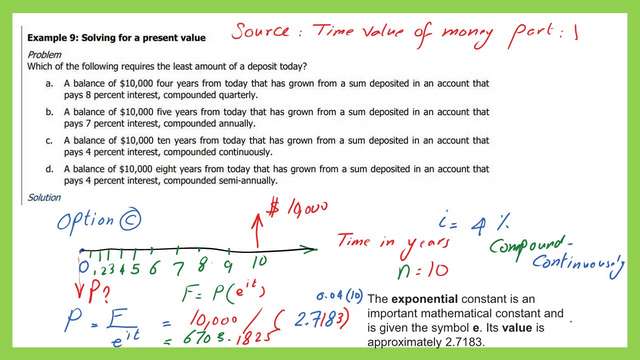
Option-4 for the solved problem for compound interest.
This is the fourth option, how to find the value of the present value P0 to get $10,000 after 8 years, with an interest of 4 % compounded semi-annually?
The relation of P0=F*(P/F,i%,n) will be used provided that the new interest rate is 4%, compounded semi-annual.The term (1+i/n)^nt=(1+(0.04/2))^(2*8), since the number of years=8, the present value=F/(1+i/n)^nt=10,000/(1+0.02)^(16)=$7284.458.
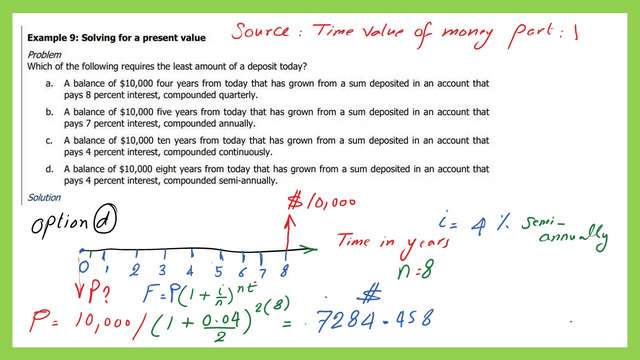
From the above different options, the least P0 value obtained is $ 6703.2, which is option C.
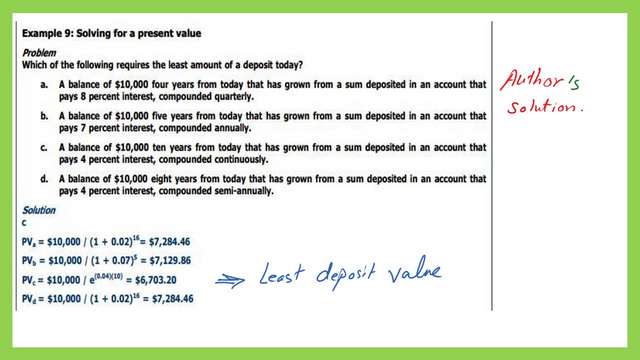
For a useful external resource, Engineering Economy. Applying Theory to Practice.
The next post is post 7– Approach to Uniform series of compound interest-1/2.

